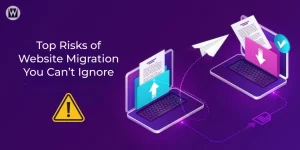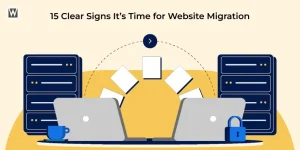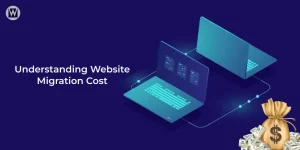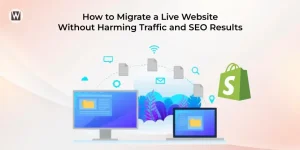eCommerce Platform Migration: Your Roadmap to a Successful Move
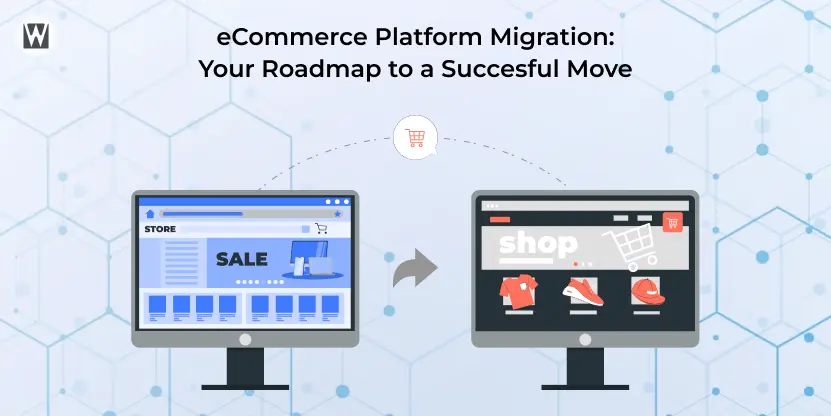
More than 27% of the global population shops online, and these statistics have been growing daily, with new eCommerce stores being introduced daily. Competition is killing, and your existing eCommerce platform might not be capable of keeping you ahead and attracting more customers. Therefore, eCommerce migration comes with a feasible solution to streamline your business operations while keeping you ahead.
eCommerce website migration is common among store owners who want to upscale their online businesses and boost site performance for online buyers. It often starts with evaluating your current website and enlisting major drawbacks and possible solutions for the new platform.
eCommerce website migration is not just about moving data from one platform to another. It’s all about upgrading your digital identity to assist your customers better. From moving data to choosing the right eCommerce platform to understanding SEO capabilities and backing up data, there is much more to do.
In this detailed blog post, you will learn the nuts and bolts of eCommerce platform migration, the steps to perform it, and much more, but let’s start with the meaning first.
What is eCommerce Migration?
eCommerce migration entails transferring components or the full online store from one platform (or host) to another. It is also known as eCommerce re-platforming, and the phrases can be used interchangeably. Regardless of the one you face, they all mean the same thing.
It could entail migrating your backend, frontend, or full solution from one platform to another. In many circumstances, firms prefer this type of re-platforming.
However, there are alternative possibilities. For example, re-platforming can entail transferring from one SaaS partner to another. It could also imply transitioning from an outsourced to an in-house approach.
Whatever the objective, eCommerce platform migration will also involve transferring all your digital assets, including blogs, images, videos, and accounts, to a new platform. For that, you need a good eCommerce migration strategy that delivers fruitful outcomes.
Why do eCommerce Business Owners Need Platform Migration?
In eCommerce, competition demands that store owners stay updated with new technologies, and consumers expect to earn a name and profit. As your business grows and expands, your current platform may no longer meet your needs, meaning migration is essential for your success.
Following are several reasons why you should migrate your eCommerce platform:
1. Scalability
2. Better Features
New platforms generally come with features and tools that improve the customer experience, make the operations streamlined, and help increase sales. For example, migrating from Magento to Shopify can allow you to use user-friendly templates for designs and inbuilt marketing tools.
3. Improved Security
4. Performance
5. Cost-Effectiveness
6. Easy Integrations
7. User Experience
Customer preferences change, and so do you, as should your platform. A migration to a customer-centric platform could result in better customer satisfaction and loyalty.
Each business is unique and needs different customization solutions to meet the evolving needs of businesses and customers. The most common eCommerce problems are indicated above, which indicate that it’s high time to migrate and hope for a better eCommerce platform.
An eCommerce Platform Migration Guide for Your Store
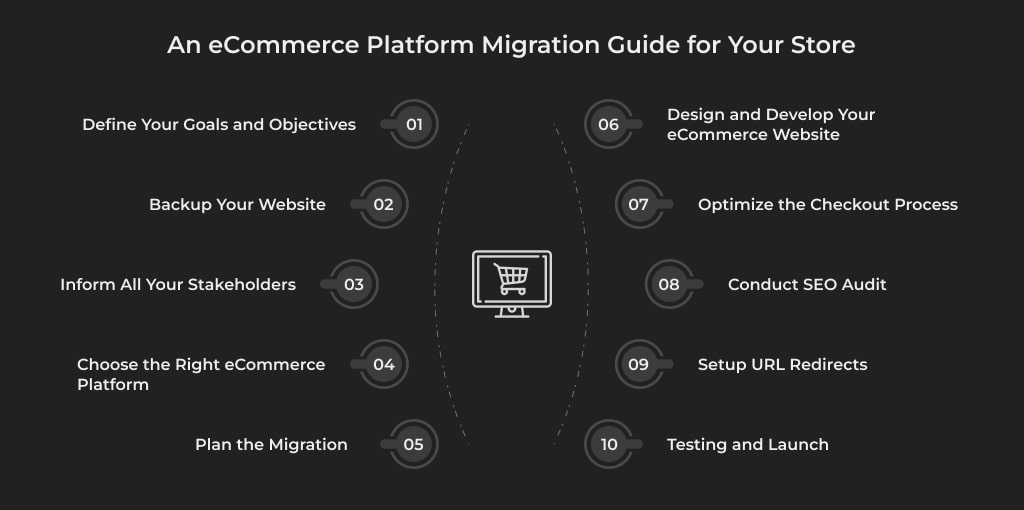
1. Define Your Goals and Objectives
Before starting your migration, you should understand what you want to achieve with this new platform. What is it that you want? Knowing your purpose will actually help you develop your strategy for migration.
- Do you want a high conversion rate?
- Do you want better navigation and usability of the site?
- Are you getting ready for future growth?
- Do you want a reduction in operational costs?
Set up measurable and tangible objectives in the form of a roadmap to guide your team toward migration and give you all the directions you need.
2. Backup Your Website
An important step to follow in the process of migration is to back up your current website. You should have a complete copy of your product, customer, and order data. Save all your media files, templates, and custom code. Make a record of current site configurations and settings.
The backup will be very valuable if you need to recover your original site or refer to data during migration.
3. Inform All Your Stakeholders
- Notify your team of the timeline and roles they will be performing.
- Notify your customers that the migration might impact them and result in some kind of downtime or a shopping experience that might be different from what they’re used to.
- Notify your partners and vendors that might be impacted by the migration.
4. Choose the Right eCommerce Platform
Choosing the right eCommerce platform is an important decision to make because that can eventually impact your store’s success. Here are some factors that help you choose the right eCommerce platform including:
- Ease of Use: Is the platform user-friendly to my team?
- Customization option: Can you customize to fit my business needs, maybe in a unique or more personalized way?
- Scalability: Will it grow and adjust to my business?
- Cost: What are the one-time and recurring costs?
- Support and resource availability: Does the provider offer good customer support or sufficient documentation?
By carefully assessing these factors and considering your business goals, you can choose the best eCommerce platform that can handle the growing traffic while allowing customers to browse products without any glitches.
5. Plan the Migration
Having set your goals in place and having chosen a platform, it is time now to develop a proper migration plan.
- Timeline: Be sure to set a reasonable timeline for each phase.
- Resource Allocation: Assign different roles and responsibilities to each of your team members.
- Risk Assessment: Identify what possible risks may be involved in a certain phase and develop proper contingency plans.
A well-outlined migration plan will bring your project back on track and minimize disruptions.
6. Design and Develop Your eCommerce Website
Let’s bring your vision to life. This step works both in design and development.
- User Interface, UI: Make it catchy and intuitive in terms of view
- User Experience, UX: Navigation should be easy, while all the important features should get to you quickly.
- Mobile Responsiveness: The design should be mobile-friendly as mobile users now garner the most eCommerce traffic.
Work with designers and developers to craft a site that looks amazing but functions just as easily.
7. Optimize the Checkout Process
A seamless checkout experience is key to preventing cart abandonment and maximizing conversion rates.
- Fewer Forms: Minimize the number of fields that the customer needs to fill in.
- Multiple Payment Options: Offer multiple payment options catering to the preferences of the customers.
- Guest Checkout: Allow customers to make an order without having an account.
Test the checkout flow with great detail so that it is user-friendly and efficient.
8. Conduct SEO Audit
Switching to a new eCommerce platform can sometimes come with certain SEO challenges and risks. Indeed, there are some tricks to follow that help you migrate without harming SEO. Some pages may break or appear erroneously as a result of changes to link architecture. You can correct and prevent future mistakes that could harm your SEO by identifying these mistakes early.
To rank well on search engine results pages, audit your website and make sure it complies with all SEO guidelines. Before launching, do additional tests to identify any possible issues with caching, firewall configurations, broken links, page redirection, and system security.
9. Setup URL Redirects
- Permanent Redirects: Apply to any permanent redirects from old URLs to new ones.
- Structure Preservation:Try keeping the URL structure as intact as possible to avoid confusing.
10. Testing and Launch
- Functionality Testing: Test all of the functionalities on the website from the product pages to search functionality and even checking out functionality.
- Performance Testing: It will tell you how responsive your website loads in every possible scenario.
- User Testing: Just a few observations from some actual users about where things may be going awry.
Leverage WebyKing’s Migration Services to Keep Up with the Digital Pace
A successful eCommerce platform migration is surely worth the effort for many online stores. However, to maintain the website’s value, it is equally important to consider the above-mentioned technical aspects. These migration steps may seem long and technical, but believe it or not, it is just the beginning. When it comes to eCommerce websites, there are A number of factors that come into play that we have yet to discuss here.
We believe anyone who has mastered website development and migration will surely be able to understand and execute the above steps. If you are not aware of the eCommerce migration process but want to make the most out of your online store, contact us. Our team is always happy to help you migrate your eCommerce website with a personalized touch.
Frequently Asked Questions
What is eCommerce replatforming?
How long does it take to migrate a website?
The eCommerce migration timeline varies from business to business. It can be as short as a few days for a normal store – two weeks for a large store.
Why is testing and quality assurance necessary in eCommerce migration?
Whether you’re upgrading technology, improving performance, or rebranding your business, this checklist ensures a smooth and successful migration every step of the way. Get Your Free Checklist Now!


Ravi Makhija, the visionary Founder and CEO of WebyKing, is a seasoned digital marketing strategist and web technology expert with over a decade of experience. Under his leadership, WebyKing has evolved into a premier full service web and marketing agency, delivering innovative solutions that drive online success. Ravi’s deep understanding of the digital landscape combined with his passion for cutting-edge technologies empowers him to consistently exceed client expectations and deliver results that matter.

